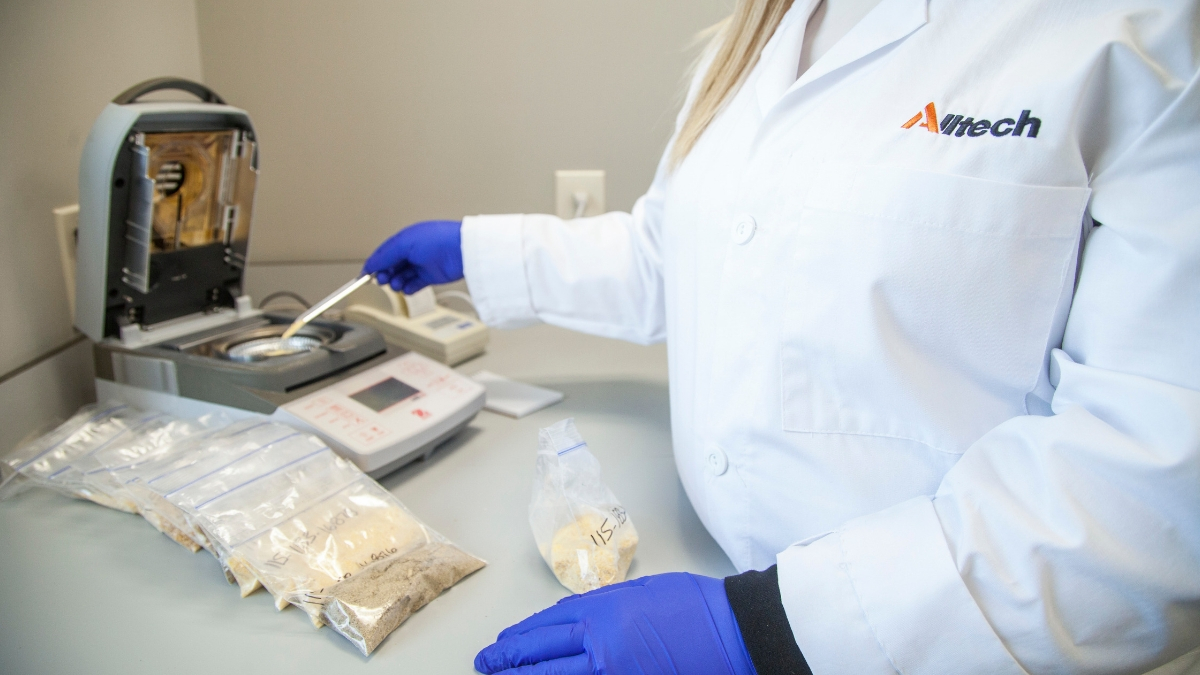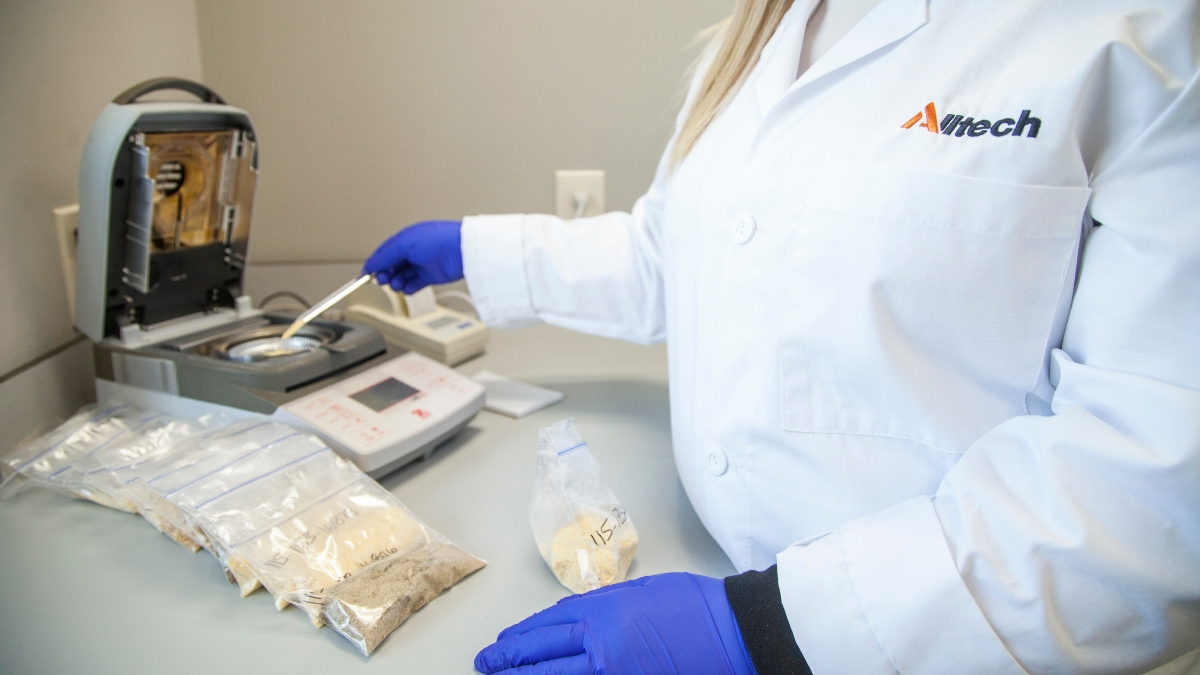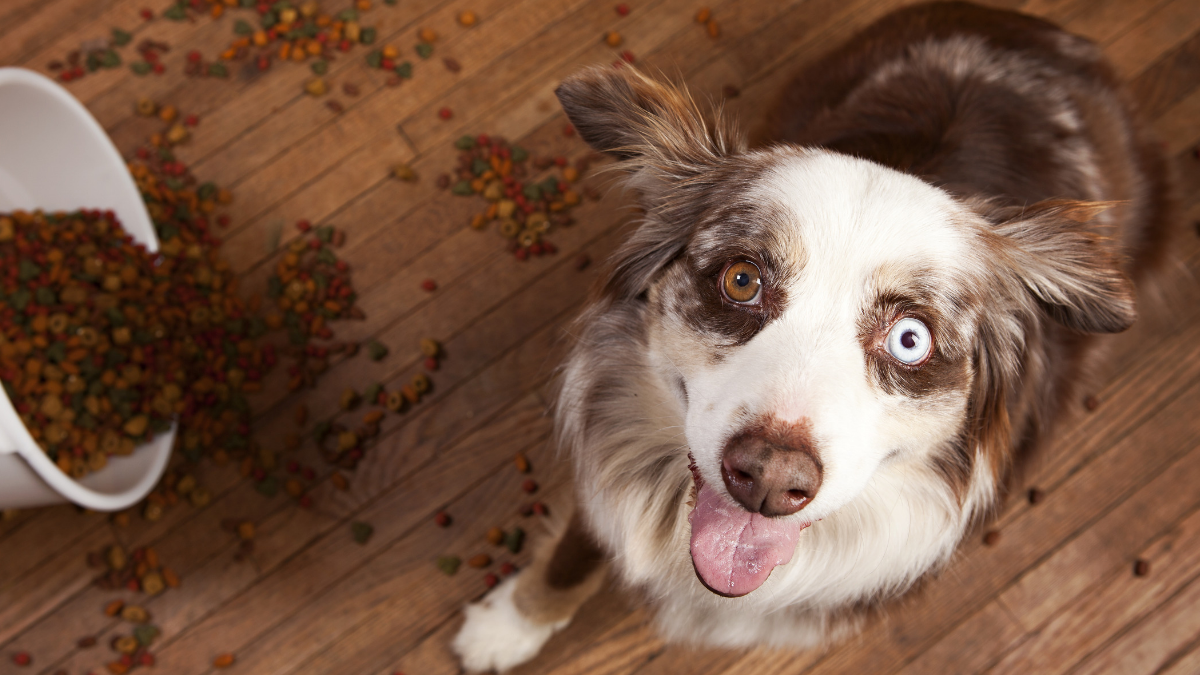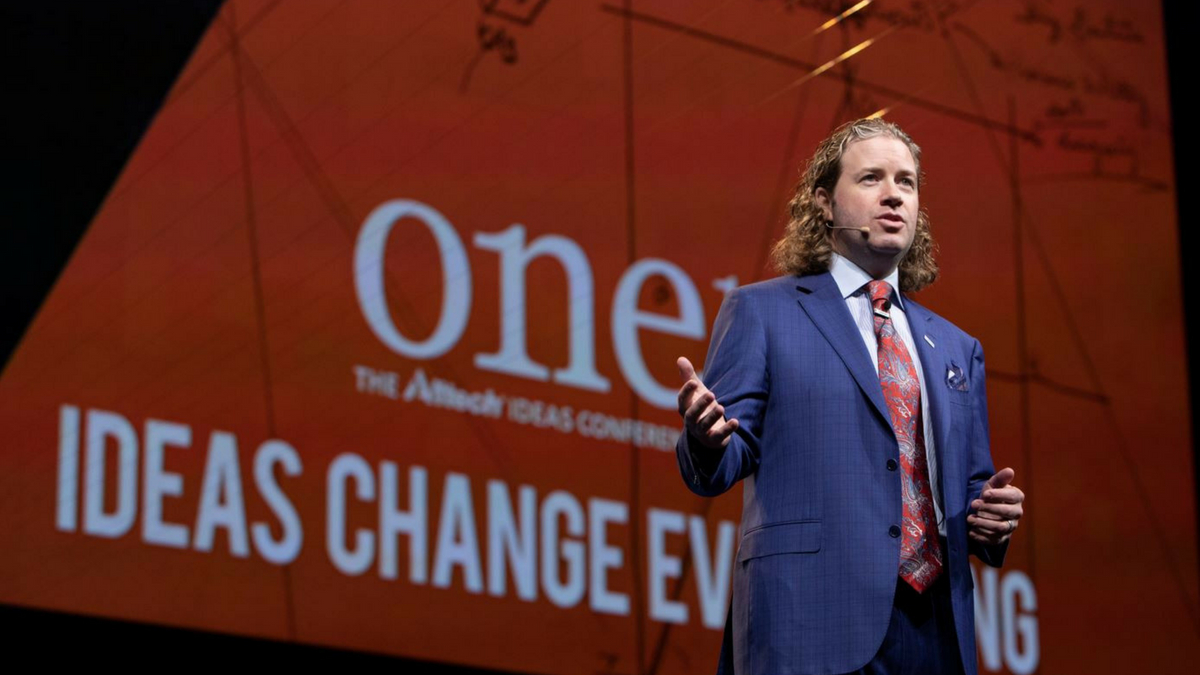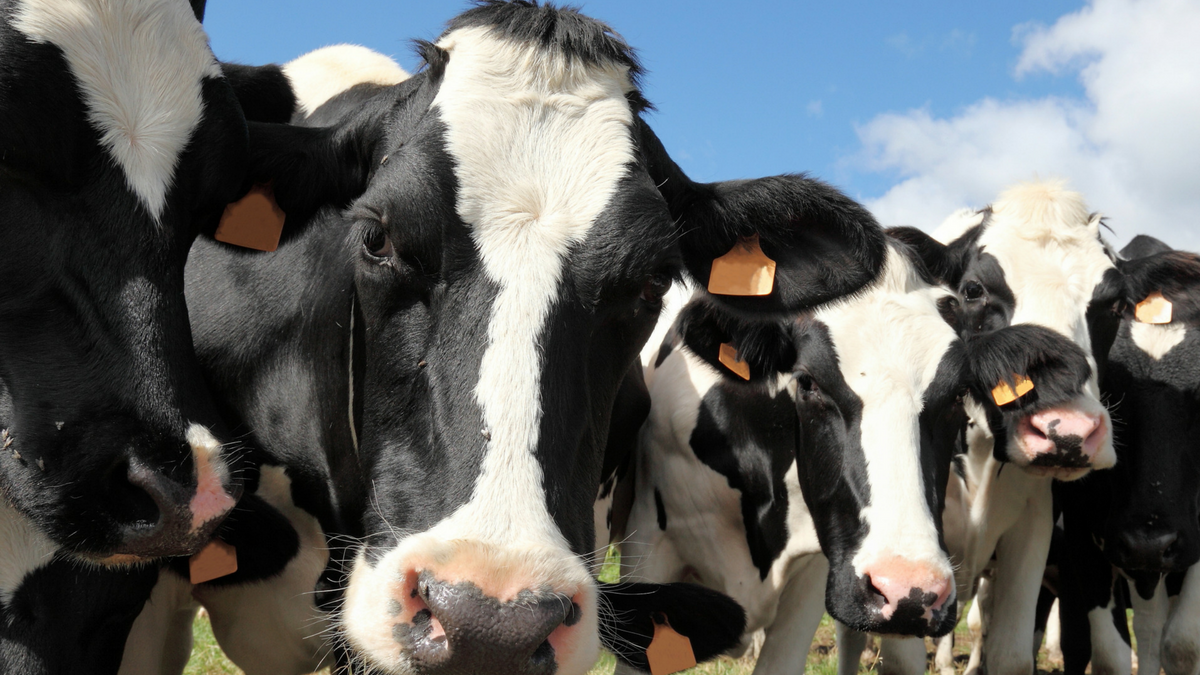The following is an edited transcript of Nicole Erwin's interview with Dr. Kayla Price. Click below to hear the full audio:
Nicole: As the poultry industry continues to reduce or eliminate the use of antibiotics and adhere to increased regulatory control on pharmaceuticals, what can producers do to ensure their final product is free of harmful bacteria? I'm talking with Dr. Kayla Price, poultry technical and research manager for Alltech Canada. Thank you for joining us.
Kayla: Thank you so much for having me.
Nicole: It's been a year since the Veterinary Feed Directive was imposed, requiring livestock producers to provide a prescription for antibiotic use with their animals. The move was in response to growing reports of an antibiotic resistance among the human population, but the superbugs are popping up everywhere — resistant strains of bacteria in humans and animals. Dr. Price, how is the poultry industry responding to consumer and federal demands that antibiotics be cut out as much as possible in livestock production?
Kayla: Well, I think as a part of your question for the U.S. specifically, you touched on it: one of their responses was saying, "Look, we need to be able to respond to this." This was coming into the Veterinary Feed Directive. Without going into the details of it, it's not necessarily a true prescription, per se, but making sure that there is more stewardship or oversight of the drugs that are being prescribed or being given, either on a treatment basis or, to some extent, on a preventative basis.
That would be the U.S. direction, whereas — if we start looking to some other places — where I'm from in Canada, we've gone in the direction where we've decided to move toward, again, veterinary oversight, but prescribing these drugs — drugs, which were once used legally as preventative antibiotics in the feed at lower levels, are now moving toward prescription and what the Canadians called the Veterinary Drug Directorate. This is, again, allowing for much more oversight and much more ownership of what it is that we're putting into these birds, specifically.
If we look globally, other folks have gone in the direction of putting in place regulations. If you look toward the U.K., there are regulations of how these antibiotics are used and when they should be used. The idea here is, again, more ownership and more oversight of when these drugs are used and how they're going to be used.
If we need to treat sick animals, we need to treat sick animals. But, at the end of the day, if we can do better when it comes to prevention in terms of using alternative strategies, then let's do better on the prevention side and save those antibiotics for prescriptions when it comes to treating sick animals.
Nicole: Your specialty is partially in providing methods of disease reduction in poultry, like coccidiosis. Can you explain a bit about what this disease is and why it can be so rampant in poultry, from backyard chickens to the large commercial house operations?
Kayla: That's a big question. I say that with a smile on my face because I spent so much time working with coccidiosis, so I'll try to bring it back down to a smaller level. Essentially, coccidiosis is a disease, which is caused by the parasite Eimeria. There are many different species of this parasite. It's very host-specific. The parasites that infect chickens only infect chickens, and then you have parasites that will specifically infect turkeys, and so on. The end result is essentially the same: it's an intestinal parasite. It impacts the gut barrier. It basically breaks through the gut barrier, so the gut is not able to work as a defense anymore, very, very simply. Now, the bird can run into problems with the gut not working as well, such as wet manure, having diarrhea and not performing as well because they're sick.
The problem is, when we talk about coccidiosis, the severity of the disease is really a numbers game: the more parasites ingested, the more severe the disease. At low levels, you can create something like a live vaccine, which is used very commonly in the industry, but you need to make sure that you're having proper cycling to develop this immunity. The problem is that it can be very difficult to manage. It can be successful when done right, but on the other hand, it can be very difficult to manage for producers who are coming in and learning this for the first time.
At that point, they run into this risk of having more of an impact down the road on these birds. Because it's, again, a disease that’s impacting the gut, we want to make sure that we're trying to maintain the health of that gut as much as we possibly can through many other ways, as well as trying to have an impact on that parasite itself.
Nicole: How has this disease, and other disease in poultry, responded to antibiotic use as resistance becomes more problematic? How has that influenced alternative methods of control?
Kayla: With coccidiosis specifically, if we start looking back at how prevention is set up within the industry itself, there are two arms, I guess you can say.
You have your anticoccidial drugs arm. So, that would take care of ionophores and chemical coccidiostats, which are used to help in the prevention of coccidiosis, that parasite.
Then you have your antibiotics arm. These would be antibiotics that are either preventative or, to some extent, for treatment. I'm just going to talk about the preventative side that would help with bacterial infections or secondary bacterial infections.
If we look to coccidiosis as a disease, part of the problem is, if it's running through the bird at low levels, it's creating this change — it's essentially having a negative impact on that gut barrier. It's creating the change in the environment, in the intestine, that allows for or creates the opportunity for bacteria to start taking over. Often, what gets paired — I kind of call them “sisters,” so to speak, or “brothers” — but what gets paired with coccidiosis ends up being necrotic enteritis, which is caused by the bacteria clustering perfringens. This is bacteria that loves to eat protein, as it can't make protein on its own. The proteins that are released from breaking down the intestinal barrier, it takes full advantage of. Stepping back, if we go back to those two arms of our prevention within the industry — our anticoccidial arm and our antibiotic arm — we come to dealing with our coccidiosis issue just as much as dealing with the bacterial issue, which is often trying to deal with necrotic enteritis. In that case, on the preventative side for antibiotics, what we're trying to do in terms of regulation is to start pulling these back or have more judicious use.
On the anticoccidial side, if we look to, again, what's happened in places like the U.K., in Europe, as well as Canada and the U.S., they're still allowing some anticoccidials to be used. Canada and the U.S. still allow chemical anticoccidials. Ionophores have a little bit of antibiotic activities. If we're talking Raised Without Antibiotics or No Antibiotics Ever, the ionophores would be taken out, but otherwise we would still have that arm. We still need to make sure that we're doing things on the alternative side to help with the antibiotic arm — to supplement what else we're doing.
Nicole: Public health groups are putting pressure on big buyers, such as restaurants and fast food chains, to no longer purchase from producers that use any kind of antibiotics. But there is some gray area here with a group of antibiotics that you mentioned called ionophores — medications like Monensin — because they're among the list of in-feed antibiotics and not considered medically important to human medicine by the World Health Organization. Groups like McDonald's have announced that they are pulling back from purchasing meat that has a history of antibiotics, except it has given a pass to the ionophores. How do you feel about allowing ionophores in the system?
Kayla: I think, with this, it comes back to those two arms. We really have to think about how parasites are different from bacteria; the two are quite different. With the ionophores specifically, even though some bodies believe there are some antibiotic components to them, the main aspect of using these ionophores is very, very specific to the parasites for which they’re being used, just as much as chemical coccidiostats. If we look at areas where they've decided to have more oversight of using antibiotics to deal with bacteria in live animal production, they’ve said, "We need to still make sure we have a handle over the coccidiosis side,” because that can be very difficult to handle, especially as we're dealing with birds in larger amounts and, again, with severity being a numbers game.
They've made the decision that the antibiotic aspect of the ionophores is relatively low — that, from the standpoint of doing a cost-benefit analysis, it's of more benefit to use it to help with the coccidiosis aspect. If we start looking to companies that are saying they want to have more oversight or try to reduce or eliminate antibiotic use, they've had the conversation with their industry members and said, "We can handle this if we tackle the antibiotic arm, but it can be very difficult to handle if we completely get rid of both our antibiotic and our anticoccidial arm." It's not an easy decision, and it can be very difficult if you start looking at it from the marketing perspective, just as much as what's actually going to work on the farm.
But again, in terms of being able to allow our producers and our farmers to have the correct tools to manage their birds effectively, some people have made that choice — to allow these ionophores and allow a strong anticoccidial arm — so that they can make sure they have a strong oversight of prevention when it comes to bacteria and antibiotics.
Nicole: Do you feel like these ionophores could eventually be weaned out of a nutrient management program, or we're just not there yet with the science?
Kayla: That's a very good question. I think some people have, to be quite honest, already answered that, because some people are raising these birds as a part of the Raised Without Antibiotics program or No Antibiotics Ever program. They're raising them effectively without using ionophores or chemical coccidiostats. Whether it's with live vaccines or whether it's with other alternative products on that side — as well as with good feed management, good water management, operational excellence when it comes to the farm itself, and bird management — they're putting all of that together and doing it very effectively.
What everyone will tell you, and what my customers will say, is that it's certainly a learning curve to get there. It doesn't happen overnight. You can try to jump right into it, but that's not as easy as you think. In order to get to the point where they're doing this well, it's taken a long time for them to get there — and a very good transition process, and in that transition process, being able to use that anticoccidial prevention arm. That includes both ionophores and chemicals.
In terms of taking out ionophores completely, I think for something like that to happen, we need to make sure that there is always a choice, not just for the consumer who's purchasing the meat at the end of the day, but a choice for our farmers in how they're able to raise these birds. They need to go into their toolbox with something that can help them — they need to be able to have that choice and that opportunity [for prevention].
That's why, I think, part of the reason why the debate on ionophores is still going on today. I think, for that point, I think it can be done, but I also think, on the other side, you need to be able to at least have that choice, specifically when it comes to coccidiosis prevention.
Nicole: What kind of research have you seen on the impact of these antibiotics in water? I ask because the overall message with all of this is that management seems to be a holistic approach — any one thing can affect another. Do you agree?
Kayla: Absolutely. I think the holistic approach to management is critical, because if we're only thinking of things just as one thing alone or thinking in these silos, I really think we're completely missing the point of how we can work with these birds and how we can produce meat or eggs or chicks or poults. You really need to have this full picture look at it — not just what's happening at your barn at this specific time, but also starting to think about, “Okay, well, what's happening before my birds come here? What's happening after my birds come here? What's happening on the breeder level — that full circle and everything in between?”
Again, thinking about operational excellence, but also making sure there's really good communication and a strong management team, not just on the producer level but also with the nutritionist, with the veterinarian — to have that complete trifecta, if you will, of everyone who can come together and make sure that these birds are raised as well as they possibly can be, and producing good, quality, safe meat or eggs at the end of the day.
Nicole: You mentioned that there are some producers that have been able to go No Antibiotics Ever. What are some of the alternatives that you’ve seen that they are using?
Kayla: There's a full range. Some of the alternatives would be looking toward using complete programs together, which could include things like mannan-rich fractions from the outer yeast cell wall. Some folks will be using things like essential oils, like organic or proteinated trace minerals. You can look at probiotics, prebiotics and, to be honest, herbs, plants — the list really goes on and on. But I think, at the end of the day, in terms of all of these different options that are out there, I think the best one is putting these combinations together strategically and using them strategically in your management program to complement what you’re doing in the feed, in the water and on the farm.
Nicole: Kayla Price is poultry technical manager for Alltech Canada. Thank you so much.
Kayla: Thank you so much for having me.
I want to learn more about supporting bird health in my poultry operation.

















